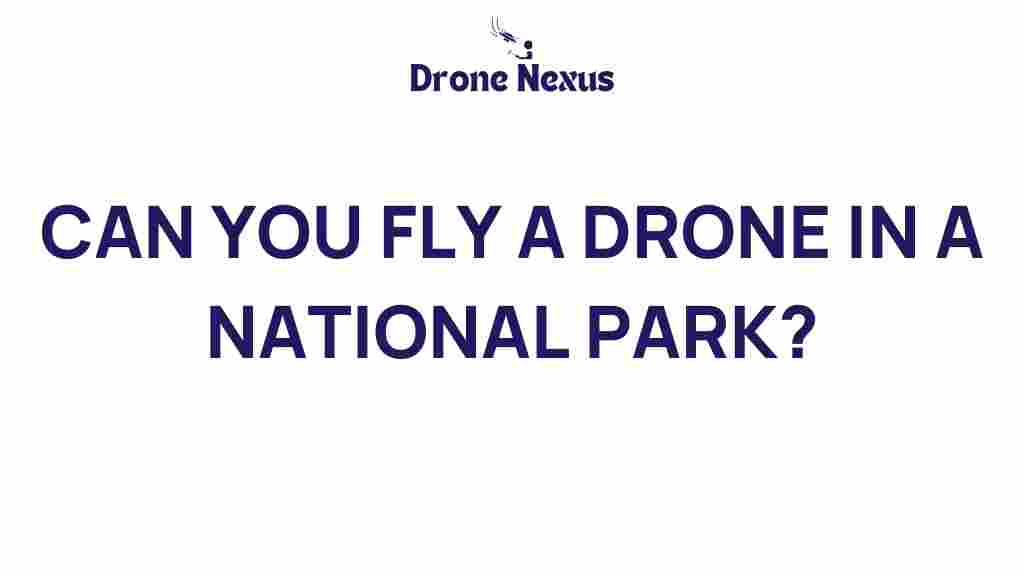Can You Fly a Drone in a National Park? Understanding Drone Regulations
In recent years, the popularity of drones has soared, offering breathtaking aerial views and unique photography opportunities. However, if you’re considering taking your drone into a national park, it’s essential to be aware of the drone regulations that govern these protected areas. This article will explore whether you can fly a drone in a national park, the rules you need to know, and the risks involved.
Introduction to Drone Regulations in National Parks
National parks are spaces designed to preserve the natural environment and provide visitors with an opportunity to connect with nature. Given their purpose, the drone regulations in these areas are particularly strict. Understanding these regulations is crucial for any drone enthusiast who wishes to capture the beauty of these landscapes without running afoul of the law.
Why Are Drone Regulations in National Parks Important?
Drone regulations exist for several key reasons:
- Wildlife Protection: Drones can disturb wildlife, especially during sensitive breeding seasons.
- Visitor Safety: Uncontrolled drones can pose risks to other park visitors.
- Environmental Preservation: Protecting the natural scenery is vital for future generations.
Understanding these regulations will help you enjoy your drone flying experience while respecting the natural environment and following the law.
Step-by-Step Process: Flying a Drone in a National Park
If you’re determined to capture the stunning vistas of a national park with your drone, here’s a step-by-step process to follow:
Step 1: Research the Regulations
Before you venture into a national park, check the specific drone regulations for that location. The National Park Service (NPS) has strict rules regarding drone usage:
- Most national parks do not allow drone flights.
- Some parks may allow drone use in specific areas or under certain conditions.
- Always check for any required permits.
For the latest updates, visit the official National Park Service website.
Step 2: Obtain Necessary Permits
If you discover that drone use is permitted in a specific area of the park, you may need to apply for a permit. This process usually involves:
- Filling out an application form.
- Providing details about your intended flight, including dates, times, and locations.
- Paying any associated fees.
Allow ample time for your application to be processed, as approvals can take weeks.
Step 3: Familiarize Yourself with Local Laws
In addition to drone regulations set by the NPS, familiarize yourself with local laws regarding drone use. Each state may have additional restrictions that you must adhere to.
Step 4: Prepare Your Drone and Equipment
Ensure your drone is in good working condition before your flight. Check the following:
- Battery life and overall functionality.
- Camera settings for optimal photography.
- Software updates to avoid malfunctions.
Step 5: Fly Responsibly
If you have received the necessary permissions and are compliant with all drone regulations, it’s time to fly! Keep the following tips in mind:
- Stay within the permitted area and adhere to any altitude restrictions.
- Observe wildlife and avoid flying near sensitive habitats.
- Keep your drone in sight at all times.
- Be respectful of other visitors—avoid flying in busy areas.
Step 6: Capture Your Experience
Once you are airborne, enjoy capturing stunning images and videos of the breathtaking landscapes. Ensure that you respect the natural environment and the wildlife around you.
Troubleshooting Tips for Drone Flight in National Parks
Even with all the preparations, issues can arise during your drone flight. Here are some common problems and how to troubleshoot them:
Drone Won’t Connect to GPS
If your drone struggles to connect to GPS, try the following:
- Ensure you are in an open area away from tall buildings or trees.
- Wait a few minutes for the drone to acquire sufficient satellites.
Low Battery Warning
Pay close attention to your drone’s battery level. If you receive a low battery warning:
- Return to home immediately to avoid losing your drone.
- Consider bringing an extra battery for longer flights.
Lost Drone Communication
If you lose communication with your drone:
- Activate the return-to-home function if available.
- Follow the last known location to retrieve it.
Conclusion: Respecting Drone Regulations in National Parks
Flying a drone in a national park can be an exhilarating experience, but it comes with significant responsibilities. By understanding and adhering to the drone regulations, you can ensure that your drone flying experience is enjoyable and respectful of nature. Always prioritize safety, obtain the necessary permits, and keep the environment in mind while capturing those stunning aerial photographs.
For more information about drone regulations and best practices, check out our comprehensive guide on proper drone usage. Happy flying!
This article is in the category Safety and created by DroneNexus Team

1 thought on “Can You Fly a Drone in a National Park? Unraveling the Rules and Risks”